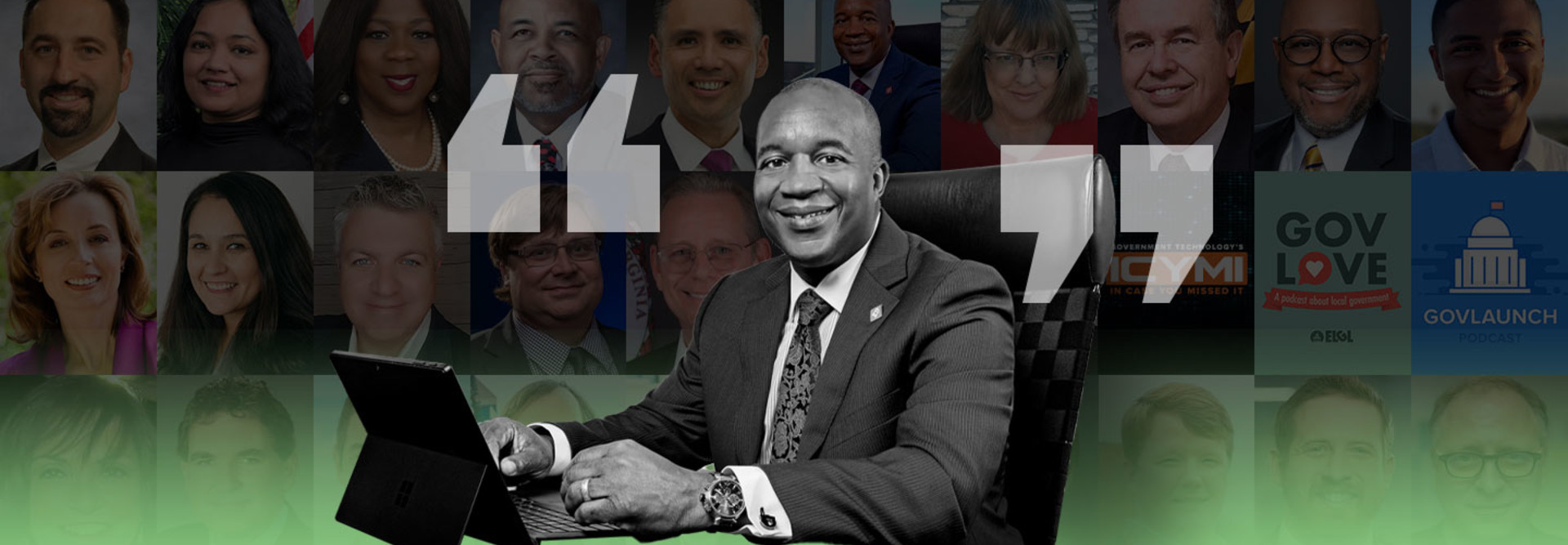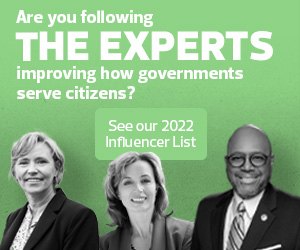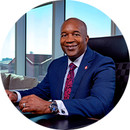After starting his career with New York City’s Metropolitan Transportation Authority, Nathaniel Ford has held key positions at transit systems across the United States, including the Bay Area Rapid Transit District in Northern California, the Metropolitan Atlanta Rapid Transit Authority and the San Francisco Municipal Transportation Agency.
Since 2012, Ford — whom the American Public Transportation Association selected as Outstanding Public Transportation Manager in 2020 and President Barack Obama named a White House Champion of Change in 2015 — has served as the Jacksonville Transportation Authority’s CEO, overseeing a 58-mile bus rapid transit network, an elevated monorail train system, and ferry and on-demand ride services.
The Jacksonville, Fla., agency is working to further connect the city’s neighborhoods through its Ultimate Urban Circulator project, U2C, which will expand its transit capabilities to include autonomous shuttles operating in key corridors.
As Ford approaches his 10th anniversary with JTA, he spoke with StateTech about his career trajectory, multimodal transit options in Jacksonville and factors that could shape urban transportation in the coming years.
Click the banner below review the full list of our StateTech State and Local IT Influencers to Follow.
STATETECH: What prompted you to enter the public transportation field?
Ford: My father paved the way, because as a young person, I observed him working for the MTA (New York City Transit), so I was very familiar with public transportation.
Eventually, he served as the chief operating officer, and at some point he suggested I take an exam for a train conductor position. I did pretty well and actually stepped away from college to start working at New York City Transit. I got bit by the bug; the excitement of moving literally millions of people every day was just such a thrill for me, and it became my life’s work.
RELATED: How cities are using cloud technology and IoT for smarter transit.
STATETECH: How does the scope of your role in Jacksonville differ from your previous positions?
Ford: JTA started out as the expressway authority, so we build roads and public transportation. That is rather unique, where you’re not solely operating one mode. We’re actually building bike infrastructure, complete street projects and just recently took on responsibility for building the 31-mile Emerald Trail, which will encircle downtown Jacksonville. We’re really excited about that.
STATETECH: Since assuming your current role, what’s the biggest challenge you have faced?
Ford: You really need to learn the community you’re entering into and have a good sense of the history, the stakeholders, the challenges in the past and solutions, and the challenges going into the future, and develop a team that can address those needs.
In San Francisco, public transportation is the No. 1 mode, ahead of automobiles, biking and pedestrians. In Jacksonville, public transportation is not as popular. Your approach has to be different, and my messaging has to be different. My focus here is developing and growing a system, pulling in different stakeholders who may not support public transportation in the same vein they do in San Francisco or New York, helping them understand that value.
STATETECH: Are there any advantages to combining public transit and infrastructure responsibilities?
Ford: Transportation authorities need to look at the entire spectrum of what our constituents and customers need — they walk, bike, drive cars and sometimes use public transportation — and of that roadway or transportation conveyance. What is the walkability? Do we have the transit stops in the appropriate locations for bus users? Do we have stops that are conducive to walking and biking to them? Where do on-demand services fit in in terms of door-to-door pickup and drop-off? I believe a holistic approach is the model going into the future. This allows us to really shape the transportation landscape.
In a lot of communities, you have a public works department that manages traffic, or a parking and traffic department, a transit department. You may even have a state roadway or highway department. The voters in San Francisco recognized the friction at times in determining priorities for a given street. Is it parking, biking, transit, automobile users? The voters passed the abolishment of the parking and traffic department, the San Francisco Municipal Railway (Muni) commission and eventually the Taxi Commission, and combined all of that into the SFMTA. I came in right after the transit and parking and traffic divisions were merged. You had engineers and planners in those entities who frankly never really talked to each other, and they were designing transportation on the same street.
DIVE DEEPER: How this Florida city is using technology to improve citizens' lives.
STATETECH: Has participating on the boards of nonprofit organizations such as Goodwill Industries influenced your career?
Ford: Definitely. I’ve been doing work with nonprofits going back as far as my tenure in Atlanta. Leading a transportation organization, a significant number of your customers are people who benefit from some of these nonprofit services.
It has always given me great pleasure and joy to create an organization that believes our role is far beyond the bridges and roadways, the steel wheels on our trains or the rubber tires. What is the end game, the true purpose of what we do? Helping people have access to good healthcare opportunities; get a job opportunity that’s not just limited to where they can walk or bike to, but throughout our service area; as well as being able to get an education and advance their family or personal career goals is part of my organizational leadership DNA. The flip side is that we as an organization, and I personally, get insights into some of the challenges our community is facing.
EXPLORE: How local IT officials are developing tools to address tech challenges.
STATETECH: What do you think the future of transportation in cities will look like?
Ford: In Jacksonville, we’re set to double our population in the next 15 years. How do you maximize throughput with multiple modes operating in the same corridor? It’s going to be a greater level of coordination. Technology is going to significantly help us deal with those challenges. The pandemic created somewhat of a reset in terms of where people will live and work. We believe mobility hubs that are more community-oriented will help with our purpose.












